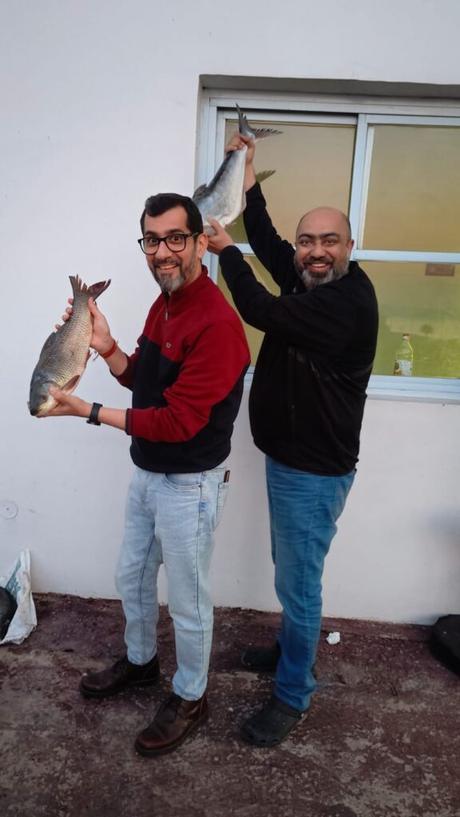In the era of millets and a focus on organic foods, one area that has seen little change is non-vegetarian consumption. Unfortunately, the quality of meats consumed has declined in terms of nutritional content.
Where our forefathers consumed free-range chicken and fish, today we consume artificially bred, space-constrained birds and animals. They are fed chemicals for faster growth, their feed is no longer natural, and in some cases, even the color of the meat is artificially enhanced.
During a recent visit to the beautiful Rajghat dam on the border of Madhya Pradesh and Uttar Pradesh, interacting with officials from Dam Good Fish was enlightening. This company sells fresh and naturally grown fish from the dam across India to patrons who value quality. Surprisingly, even the price differential isn’t significant, at least not currently.


Dr. CS Umrao, a PhD doctor who has worked closely with government departments for a long time, took us to the middle of this huge 472-square-kilometer dam and showed us various boats used for fishing. These fishermen operate manually powered fishing boats and return after a couple of days. However, their catch is collected daily by a motored trailer and immediately sent to the market after proper temperature-controlled processing. Dr. Umrao states that these fish are more nutritious than artificially bred fish or those raised in ponds due to the following reasons:
- Tissue Toughness: Fish in dams travel hundreds of kilometers daily. This free movement helps build their tissues, resulting in a better taste and scientifically proven higher nutritional value.
- Organic Feed: These fish are often found in their natural habitat, allowing them to feed on a diverse diet rich in natural nutrients. Whereas artificial feeding also helps for faster growth in the ponds. Consequently, fish coming from dams tend to be higher in essential nutrients such as omega-3 fatty acids, crucial for brain and heart health. Additionally, dam-fresh fish are often lower in harmful pollutants and contaminants commonly found in commercially bred fish, making them a safer and healthier choice.
- No Antibiotics: Since Fish raised in ponds are living in stagnant water which doesn’t clean by itself, they are often given antibiotics to prevent diseases. In contrast, fish from dams lead a more natural life and develop natural immunity.


From an environmental perspective, opting for dam-fresh fish can have a positive impact. Unlike commercially bred fish, which are often raised in crowded and unnatural conditions, fish from dams are part of a natural ecosystem. Their consumption supports sustainable fishing practices and helps maintain the ecological balance of dams and their surrounding areas.
Furthermore, consuming fish from dams can have economic benefits. Many local communities rely on fishing as a source of livelihood, and supporting local fisheries can help stimulate local economies. By promoting the consumption of dam-fresh fish, consumers can contribute to the growth of sustainable fishing practices and the development of local fishing communities.


When asked why fish from ponds are still being bred despite the established advantages of eating fish from dams, Shailesh Patel, founder of Dam Good Fish, explained, “There are a few reasons. First, there is a slight cost advantage, and second, there is year-round availability of a few varieties. Furthermore, most consumers are ignorant and simply consume what is easily available.”


There is a small guest house near the dam with a few rooms and a good open area. This can also be a great picnic spot for those looking for a calm and relaxed holiday. Getting to eat fish directly from the dam and cooking it with minimal ingredients to enhance its natural flavors is an experience in itself.
The advantages of eating fish from dams are clear. Not only do these fish offer superior nutritional benefits, but they also support environmental sustainability and local economies. As consumers become more conscious of their food choices, opting for dam-fresh fish can be a step toward a healthier, more sustainable future.
The article was first published in The Pioneer.

